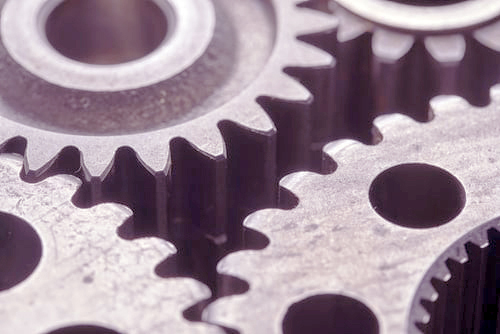
Droplet separators & demisters
Droplet separators and demisters are used to remove liquid from an air or gas flow. Different types of droplet separators are used depending on the amount of liquid entrained in the gas, droplet size, and the desired purity of the process gas downstream.
We supply a complete range of products and solutions for efficient droplet separation. Together with our suppliers, we offer advanced technical support and very extensive know-how and experience.


Profiles
Profiles are used for droplet separation in processes with large gas flows. Low pressure drop with high separation efficiency.

Demisters
Demisters separate up to 100% of 2-5µm droplets in a gas flow.

Candle filters
Candle filters are used for the separation of droplets <2µm at low gas flow rates.

Other products
Other products and solutions for effective droplet separation.

Support & Service
We offer process design, engineering and customised solutions for droplet separation.
Choose the right product and solution for optimised droplet separation
To achieve the most effective droplet separation, it is important to understand how different parameters affect the choice of product and type of solution.
- How does droplet size affect choice of droplet separator?Read the full answer
A process gas contains a wide range of droplet sizes distributed in line with a normal (Gaussian) distribution graf. Different types of droplet separators capture and remove different droplet-size ranges.
- Why is pressure drop an important factor when selecting and designing a droplet separator?Read the full answer
A process gas flow is generated by a fan or compressor, which creates a vacuum or outlet pressure. Pressure is energy, which is a cost and needs to be taken into account in order to find an optimal solution.
- Are there any specific requirements regarding separation/removal efficiency?Read the full answer
Separation or removal efficiency targets may be set by statutory emission requirements or a need to reduce a certain amount of contaminants in order to avoid corrosion and other damage downstream in the process. In some processes, droplet separators are used to reuse valuable substances and product.
- Which other parameters affect the selection and design of a droplet separator?Read the full answer
In addition to droplet size, allowable pressure drop and desired separation efficiency, there are a number of other important factors to consider when selecting and optimising the design of a droplet separator.
- Why is effective droplet separation a win-win for your business and the environment?Read the full answer
Efficient and optimally designed droplet separation removes contaminants and other unwanted substances in the process prevents damage and corrosion to pipes, compressors and other process equipment enables product recycling ...which leads to increased process efficiency, energy and cost savings, and reduced hazardous emissions.
How does droplet separation work?
The principle of droplet separation is that the droplets in an air or gas flow collide with the surface of the droplet separator. The droplets merge, grow in size and create a thin film of liquid. When the film reaches a certain thickness, it is affected by gravity enough to flow to the bottom of the droplet separator and from there the liquid is diverted from the gas flow.
Profiles
When the gas flows between the wave-shaped profiles, the liquid droplets collide with the surface of the profiles.
The high gas velocity and the inertial forces acting on the droplets when they are forced to change direction to follow the gas flow along the shape of the profiles, means that the droplets do not have time to change direction and collide with the surface instead.
The droplets coalesce on the surface and form a thin film. As the liquid film grows in thickness, it is increasingly affected by gravity and flows to the bottom of the droplet separator and is drained from the gas flow.
Droplet separators made of profiles are available for both horizontal and vertical flow and separate droplets >15µm under normal operating conditions.

Demisters, coalescers & candle filters
Demisters, coalescers and candle filters consist of a large number of wires or fibres that the gas stream is forced to pass through. The liquid droplets collide with or get stuck between the wires/fibres and merge. The merged droplets grow in size and are eventually affected by gravity enough to flow to the bottom of the demister/coalescer/candle filter, where the liquid is diverted from the gas flow.

Impaction (Droplet size >3µm)
The liquid droplets in the gas flow collide with the surface of a wire or fibre in a demister and get trapped instead of being carried away with the gas flow. Impaction occurs at gas velocities between 1 and 10 m/s.
Inception (Droplet size 1-3µm)
The droplets are trapped between the threads or fibres at gas velocities usually between 0.2 and 0.8 m/s. Typically, the finer the fibres, means less space between the fibres, which in turn increases the amount of droplets captured.
Brownian diffusion (Droplet size <3µm)
Brownian diffusion occurs at low gas velocities, normally below 0.2 m/s and maximum up to 0.25 m/s, when the gas passes through a bed of very fine fibres. The small liquid droplets collide with the surrounding gas molecules, forcing the liquid droplets to move in different directions and eventually collide with the fibres in the bed. The smaller the diameter of the fibre, the smaller the liquid droplets that can be captured from the gas flow.

Effective droplet separation - a win-win for your business and the environment
Efficient and optimally designed droplet separation removes contaminants and other unwanted substances in the process
- removes contaminants and other unwanted substances in the process
- prevents damage and corrosion to pipes, compressors and other process equipment
- enables product recycling
...which leads to increased process efficiency, energy and cost savings, and reduced hazardous emissions.
Certifications
Here you will find our suppliers' various certifications. Some certificates are also available for downloading.
Support & service
We offer the support you need to optimise your process, minimise risk and achieve a sustainable solution.

FAQ Droplet separation
Here you will find a variety of questions and answers about droplet separation.



